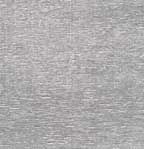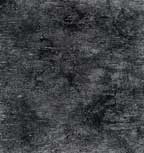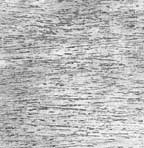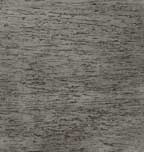Reprinted with permission from Custom Woodworking Business.
A little investigative work following a sales call reveals the secret to a unique finish.
By Mac Simmons
In the early 1960s, part of my first sales territory working for a finishing materials supplier was Philadelphia and the surrounding towns. I had planned a four-day sales trip and had an itinerary to see several key accounts, leaving enough time left to drop in on some other accounts along the way. One of those accounts was a large woodworking shop, which also did finishing, refinishing and restorations.
After introducing myself and chatting with the owner and finishers, I was shown a few sample panels they had received and was asked if I knew how they were finished. The finish was iridescent and very unique. I could not give an answer immediately. I told them that I would need a sample of the finish to give them a solution. They had no other samples, but said they would try to get some for me.
After giving me an order for finishing materials and as I was leaving, the owner called me back. He had decided he would let me take one of the color panels with me, although he would need it returned on my next trip. He asked that I call him as soon as I knew how it was done. I left with the iridescent-colored panel and continued thinking about how this finish was created. I had an idea by the time I got to the fourth customer, where I asked if I could have a small piece of 400-grit wet-and-dry sandpaper to use.
When I got to my hotel that evening, I started to lightly sand a small area on the sample and took notes on what I found. It did not take long to see how the finish appeared to be done. In the morning, I called the owner of the woodworking company and explained it to him. He asked me to send him all the materials he would need to do that job and also my “how-to” finishing schedule. The following is the secret to that mysterious metallic toner finish.
Getting Started
As with all finishes, you must start with clean and well-sanded wood. You should make up completely finished samples, including the final coatings. This metallic finish works best on open-grained woods, because you can emphasize the grains with either a filler or colorant. (I will explain further below how you can make use of any wood or substrate without grains to create metallic toner finishes.)
The finish begins with a silver toner on an open-grained wood (or, if you prefer, you can exchange the silver with gold). You apply a full coat of the silver metallic coating and allow time for this silver base coat to dry completely (see Photo #1).

Next, you should select a sealer that is compatible and that will protect the silver base coat. Apply two full coats of sealer, allowing for drying time in between coats.
Coloring in the Grains
You can use a ready-to-use paste wood filler if you want to fill in the grains, or a pigmented graining stain to highlight the grains (see Photo #3). If you use the paste wood filler, be sure to remove the excess. Do not allow the residue to harden or you could end up sanding through the sealer into the silver toner.
Here is one formula for making up graining stains: Combine 1 to 2 ounces of black Japan, oil or universal colorant with 14 ounces of mineral spirits. You also can use artist acrylic or water colorants, using water as the solvent. These all make excellent graining stains for coloring in the grains.
The graining stain should be wiped on, rubbed into the grains, then lightly wiped off and allowed to dry (see Photo #2). Do a light sanding with a piece of non-loading sandpaper on a sanding block to remove the stain from the surface, while leaving the color in the grains. The two coats of sealer you applied should protect the metallic toner.
Next, apply a clear coat, which will bring out the grains’ color (see Photo #3). You could stop at this point, apply a few clear coats, and you would have a complete iridescent finish. Or you can continue to add more color and clear coatings, depending on the desired final effect.


Finishing Up
If you continue to add color, you should prepare a shading stain. I use a black colorant. You also can use red or brown mahoganies, fruitwoods or other colors.
To make up a shading stain, use a dye stain for optimum transparency. You will need 1 ounce of a dye to a 50/50 mixture of a compatible coating and solvent. Be sure to test the shading stain. You should mix, and then strain before testing. If the color is too strong, reduce it with more thinner.
You want to use a weak color for your shading stain, so it does not block out the silver background or the highlighted grains. You will have to make several passes with a spray gun before you see any color appear on the coating. Once you get the color you want, stop the color shading and allow for drying. Apply as many clear coats as you need to accomplish your finish (see Photo #4). As an alternative, you also can add more color by applying a glaze, then brushing it out and top coating.

Variations of the Finish
If your wood or substrate does not contain open grains, you can convert the graining stain formula into a glazing stain. You can use the glaze to add some grain effects to the metallic toner finish.
To make up a glaze you will need 1 to 2 ounces of Japan, oil or universal colorants, 14 ounces of mineral spirits and 2 tablespoons of boiled linseed oil. Apply the glaze with a cloth in a circular motion, then brush out the glaze in an east and west direction. Then allow it to dry.
You also can do iridescent finishes using metallic gold base coatings with a Van Dyke Brown glazing stain. You can select from a variety of colored shading stains, followed by a few clear coats. You can brush on a colored glaze to add both color and effect to the finish, then apply your choice of a colored shading stain.
I still do not know exactly how the original samples in my earlier story were finished. But I do know that my finishing solution certainly worked, not only for the shop in Philadelphia, but also for many others finishing shops that I visited later.
These two iridescent finishes are actually easy to do. With some trial-and-error testing, you will soon find you can include them in your own finishing portfolio.
Reprinted with permission from Custom Woodworking Business.